‘Cuban Revolution: a Challenge to US Imperialism’


Orinoco Tribune – News and opinion pieces about Venezuela and beyond
From Venezuela and made by Venezuelan Chavistas

By Martín Koppel, Mary-Alice Waters, And Róger Calero – Oct 25, 2021
Cuban representative speaks on US economic war, campaign of lies against socialist revolution
New York — Carlos Fernández de Cossío, head of the Cuban foreign ministry’s department for U.S. affairs, was in New York at the end of September for the opening session of the United Nations General Assembly. As part of his busy schedule, he made time to sit down and talk with the Militant. He spoke about the intensified assault the world’s strongest imperialist power is today mounting against the men and women who made and continue to defend Cuba’s socialist revolution.
“The most enduring and successful challenge to imperialism in the Western Hemisphere has been the Cuban Revolution,” said Fernández de Cossío. “It’s a challenge to the U.S. as an imperialist power that they must try to defeat.”
For more than six decades, he noted, despite the enormous resources devoted to trying to overturn Cuba’s revolutionary government and reestablish capitalist property relations, the U.S. rulers have failed in that goal.
Imperialist efforts and expectations notwithstanding, the revolution didn’t collapse in the 1990s after the implosion of the Soviet-bloc regimes and the profound economic crisis that created in Cuba.
Then the imperialist rulers “bet that when Fidel Castro was gone the Cuban Revolution wouldn’t survive,” said Fernández de Cossío. When that didn’t happen, they thought it would all be over when Raúl Castro stepped aside. But the revolution continues.
“For U.S. imperialism and the enemies of Cuba, this continuity is a big challenge,” he noted. “They cannot accept the legitimacy of a popular revolutionary government that is no longer led by the historic generation” — the generation that led working people to power in 1959 and established a government that defends their interests.
“Today this government is led by new generations. Cuba is not capitalist, it doesn’t accept capitalism. That represents an obstacle for imperialism in this hemisphere.”
That’s why over the past several years the U.S. rulers, under the Trump and now Biden administrations, have imposed the most comprehensive economic sanctions ever on Cuba. These measures, more than 200 of these recently enacted, sharply restrict Cuba’s access to the international banking system and block foreign investment, vital fuel imports, and remittances from Cuban Americans to their families on the island.
U.S. targets Cuban artists, blacks
That’s also why today Washington is waging a political offensive targeting “several pillars of the legitimacy the Cuban Revolution has won internationally,” he said.
One of those pillars of moral authority with working people worldwide is how the Cuban Revolution has expanded access to culture and education to millions in city and countryside. The revolutionary government has a powerful, proud record of fostering the widest artistic expression.
“The U.S. government is spending tens of millions to paint the false image of a conflict between the revolutionary government and artists, between the government and youth,” Fernández de Cossío noted.
Washington has sought to rally artists in the United States and internationally in support of the so-called San Isidro group, a U.S. government-funded operation that enemies of the revolution cynically portray as a movement of “young, black independent artists.”
RELATED CONTENT: In Defense of Socialism: On the Cuban Authorities’ Decision to Prohibit Marches
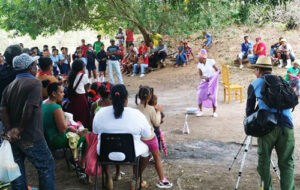
“This effort goes along with their attempts to discredit Cuba’s achievements in eliminating racist discrimination,” Fernández de Cossío said. “With a huge dose of demagogy and hypocrisy, they seek to paint Cuba as being a racist country — because of the revolution.”
Cuba before 1959 “was a racist society,” he said. “The revolution put an end to institutionalized discrimination.
“Since then, the government and the Cuban Communist Party have led efforts to eliminate racial prejudice. It can’t be erased by decree. You can’t create an ‘anti-racist ministry’ to do so. Along with other steps, it requires educational, cultural work.
“I wouldn’t be honest if I denied that we still have a ways to go. Even with the huge advances in employment, education, health, and other conditions the revolution has brought about for the Cuban people, it’s still a stratified society with different socioeconomic levels. We still haven’t eliminated the disparities we see today in urban neighborhoods that were worst-off in social and economic conditions before the revolution.
“A Havana neighborhood that was poor 50 or 60 years ago is likely to still have more crowded housing, poorer ventilation, a population with lower levels of university education, more crime than other areas.
“That’s true regardless of skin color. But taking into account the conditions the black population faced before 1959,” the disparities remain greater for black Cubans today, he said.
For that reason, “the Cuban government and society continue to wage a fight against racism and its legacy.”
Internationalist doctors smeared
Fernández de Cossío highlighted another pillar of the revolution’s support among working people worldwide that is targeted by Washington — Cuba’s record of internationalist medical cooperation.
“Our doctors serving in other countries are labeled ‘slaves.’ The Cuban government’s solidarity — the imperialists call it ‘human trafficking.’
“They try to stigmatize the work of Cuban volunteers who are saving lives, providing care to millions in some of the poorest communities of more than 100 countries.
“The U.S. State Department has sent its representatives to pressure other governments that legitimately request Cuban medical assistance, demanding they not accept it.”
Fernández de Cossío pointed out that “in the midst of the pandemic, Cuba is the only government in the world — the only one — that has sent medical brigades to help other countries fight COVID. They’ve gone to 40 countries — from Italy and oil-rich Persian Gulf states to Latin America and Africa.
“And the U.S. government attacks us for that!”
Washington is also waging a concerted effort to undermine the legitimacy of leaders of the new Cuban government, Fernández de Cossío said. “They personally attack President Miguel Díaz-Canel. They say, ‘He’s no Fidel Castro.’ At the same time, they charge he’s a dictator, his regime is repressive.
“That shouldn’t surprise us. It’s how the imperialist propaganda machine works.”
Stepped-up U.S. economic aggression
Addressing the economic situation in Cuba today, Fernández de Cossío said the big-business media asserts that Cuba “is going through its worst moments ever.” That’s not accurate, he said.
“The most difficult times were the 1960s, when we were engaged in a civil war inside Cuba with counterrevolutionary groups armed, trained, and financed by the U.S.”
The 1990s economic crisis, precipitated by Cuba’s abrupt loss of more than three-quarters of its foreign trade after the implosion of the Soviet Union, “was a more severe economic crisis than today. That’s hard to explain to young people who were only children then, but we had 18-hour blackouts, practically no public transportation. There were such food shortages that people lost weight dramatically.” That’s not the case today.
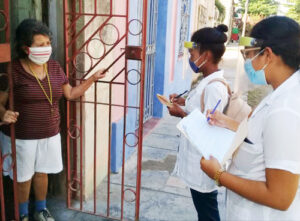 “What’s the biggest problem today? Unlike the 1990s, there are greater social and economic inequalities in the population. In previous decades, because of the revolution, Cuba was a more egalitarian society. But we’ve been forced to use economic methods — some call them ‘market-friendly’ — that have generated inequalities, although Cuba has much less social inequality than any other country in the world.”
“What’s the biggest problem today? Unlike the 1990s, there are greater social and economic inequalities in the population. In previous decades, because of the revolution, Cuba was a more egalitarian society. But we’ve been forced to use economic methods — some call them ‘market-friendly’ — that have generated inequalities, although Cuba has much less social inequality than any other country in the world.”
In recent years ownership of small and medium private businesses has been encouraged, and the number of workers who can be employed has now been increased to 100. Farmers can sell more of their produce on the open market. Families can sell their homes.
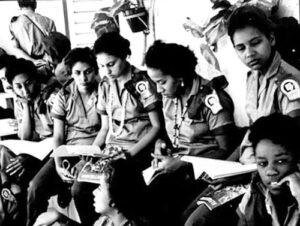
The expansion of tourism and other measures to gain hard currency needed for importing essential goods have led to a disparity between those who receive part of their income in dollars and those who don’t. Remittances from abroad go disproportionately to better-off families rather than working people, especially those who are black, and that has sharpened racial tensions.
Fernández de Cossío noted that in January 2021 the government implemented a series of economic measures. Among these, subsidies for many basic food items were reduced. Financial assistance was cut back for families receiving benefits for household members who are unemployed but fit to work. A wider range of wages was established for different jobs.
The minimum wage and retirement pensions were increased. Despite that, many Cuban families are having a very hard time. The purchasing power of the peso has dropped with the de facto devaluation that took effect in January through the elimination of a dual currency structure in place for more than two decades. Today Cuba is experiencing sharply rising inflation.
“We’ve introduced measures such as these in a gradual way, and we expect to introduce more,” said Fernández de Cossío. “But we’re not heading toward a capitalist economy. Inequalities are greater but Cuba’s economic structure doesn’t even remotely approach a capitalist economy.”
The increased economic and social tensions are magnified “by the social media and digital networks that have entered the mix in Cuba, with the harmful effects they have everywhere, including in the United States,” he said.
“The U.S. government is spending millions to bombard Cuba with propaganda” through social media to exacerbate antagonisms and spread lies.
‘U.S. uses pandemic against Cuba’
Fernández de Cossío outlined some of the main economic challenges today.
“First is the intensification of the U.S. economic blockade against Cuba,” he said. Since mid-2019 Washington has imposed sanctions on foreign shipping companies and other measures to restrict Cuba’s imports of oil.
“Imagine if New York City suddenly faced a sharp increase in fuel prices, or part of its supply was cut off. If Canada, which supplies electricity to New York, said: ‘From now on New York City will only get 30% of its electrical power.’
“Or if now, in the midst of this COVID pandemic, you had to buy medicine or medical equipment on the international market and were told, ‘No, we can’t sell you these products because they contain more than 10% or 12% of U.S. components or U.S. raw materials or intellectual property.’
“Or if, because of sanctions, you couldn’t buy equipment or raw materials from the manufacturer, but had to go through a third party and pay twice the original price.
“That’s what they’re doing to Cuba.”
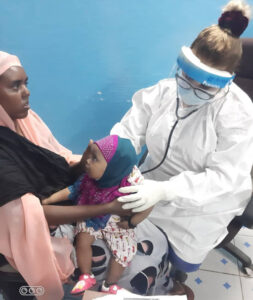
Another challenge is the economic cost of the COVID pandemic. Washington, he said, “has used the pandemic as an ally in its aggression against Cuba. As a result, we’ve had difficulty getting medical supplies, not only for COVID but basic medicines: for high blood pressure, diabetes, allergies, cardiovascular disease.”
Fernández de Cossío noted that “throughout 2020 Cuba was quite successful in dealing with the pandemic. The numbers of infections and deaths were almost insignificant on the world scale.” This was because in Cuba, where access to health care is universal and free of charge, doctors, nurses, and other volunteers were mobilized to visit homes in every neighborhood across the island, making sure those needing medical care received it. No one was left on their own.
“In the first months of this year, however, with the Delta variant, the pandemic began to have a big impact, and the summer was particularly hard. Since August we’ve reached a plateau, and now there’s a downward trend in cases and deaths as a result of the vaccination campaign,” Fernández de Cossío said.
“But the economic costs of the pandemic have been high. We’ve had to close schools and many workplaces. There’s been almost no tourism — the main source of income for our country.
“And we have the increased costs of the hospitals and isolation centers. My son was one of the many youth who volunteered at an isolation center. Patients and workers there are fed three meals and a snack a day free of charge. The facilities have air conditioners and fans — that requires fuel to generate the electricity. All that has to be paid for.”
Illustrating how tight the economic situation is today, he said, “Every week our government has to review its list of pressing needs and — based on the limited income from foreign tourism and exports — make decisions on what we can allocate funds for and what we have to postpone.
“The cost of what needs to be done is always higher than the income received. Every necessity that is postponed becomes an additional problem.
“And there’s a third list: what we allocate for longer-term development.
“Some critics, outside and inside Cuba, ask: if there’s a shortage of chicken and other food, why do we keep building tourist hotels? The answer is: we can’t consume everything we have today and leave nothing for our children to live on.”
Fernández de Cossío explained that during the economic crisis of the 1990s, known in Cuba as the Special Period, “we developed what today is BioCubaFarma, the state biotechnology and pharmaceutical enterprise that allows Cuba to produce vaccines and other medicines of its own.
“We also began to invest in tourism, which made it possible for Cuba to stop being a country that depended on sugar exports as its main source of income — a legacy of colonialism.
“Those investments required capital, funds that were not used for public transportation or electricity or food. They were invested with an eye to today’s generation of Cubans. And that’s a challenge we continue to have.”
Fernández de Cossío noted that, even after the intensification of U.S. sanctions beginning in 2017, “Cuba registered some economic growth up until mid-2019. That’s when the U.S. government took steps to block our fuel imports — a big blow to our economy. Then in 2020 we were hit by the COVID pandemic that has affected the entire world.
“All that has limited our plans to reduce dependence on food imports.” For example, he said, Cuba has sought to boost domestic pork production. But raw materials for animal fodder, such as soy and corn, are still largely imported, and Cuba’s lack of hard currency limits its ability to buy those components on the world market. Efforts to produce varieties of corn and soybeans suited for Cuba are underway, but cannot yet meet demand.
“So today we sometimes have to choose: do we import chicken or medicine for the population, or do we buy fodder in order to produce more pork?
“It’s like the family that’s gathered around the table, deciding how to spend its money for the week. That’s the challenge we face in Cuba.”
U.S.-orchestrated July 11 events
These acute economic pressures, combined with Washington’s political offensive, “came together and were the context for the protests of July 11,” said the Cuban official.
He countered the lies by the U.S. government and capitalist media internationally, which claimed a massive anti-government “uprising” swept the island that day.
“The image presented by the international media is one of days or weeks of protests. That’s not true. They were on one day, July 11. They happened in 11 towns and cities. They were not massive demonstrations.
“In fact, the largest numbers in the streets were people who came out to support the revolution.”
The capitalist media “broadcast old photos of big demonstrations in Alexandria, Egypt, or in Buenos Aires, and presented them as if they were pictures taken in Cuba that day. Or they broadcast photos of pro-revolution demonstrations in Havana, claiming they were scenes of counterrevolutionary protests in Cuba!”
Who took to the streets on July 11?
“The majority were people genuinely frustrated by the blackouts, the food shortages, the problems with public transit. They were frustrated because the schools were closed and they had the kids at home all day. Because there was no entertainment — you couldn’t go to parties or the beach. Because there are inadequacies in the administration of community and government services. All these things are true.”
The protests, however, were not spontaneous as claimed in the foreign big-business press and social media.
“Some of those in the streets were incited by social media outlets that had been campaigning for weeks” for such actions, Fernández de Cossío said.
“The first protest on July 11 took place in the town of San Antonio de los Baños, 40 minutes from Havana. When protesters first began to gather at a small park at 11 a.m., two correspondents from major foreign news media were already on the scene.
“These protests were directed by elements financed by the U.S. government.
“We have evidence that people were offered money, like: $150 to throw a rock at a police officer, $200 for a Molotov cocktail, $500 to set a car on fire. Vandalism and violence were planned and instigated.”
Fernández de Cossío noted that there was one incident the following day in the Havana neighborhood of La Güinera. “A group of people who had firearms tried to attack a police station. One person was killed. They planned to head next to the Havana harbor, where they had been led to believe that boats had arrived from Miami to take them to the U.S.!”
The U.S. capitalist media painted a picture of largely black, working-class La Güinera as a neighborhood in revolt against the revolutionary government.
That image was refuted by local residents, who were joined by Gerardo Hernández, national head of the Committees for the Defense of the Revolution. He explained on Cuban TV that most of the protesters there were working people fed up by the daily economic hardships who were drawn into an action instigated by opponents of the government. “There are many revolutionaries in La Güinera,” he pointed out.
Speaking to the Cuban press, Hernández said residents of neighborhoods such as La Güinera — which is in the area of the city where he himself grew up — by organizing collectively to improve conditions, gain confidence in their ability to make a difference. Working together to repair streets and homes, as they involve youth who are not working or going to school into productive activity, they begin to transform not only their surroundings but themselves.
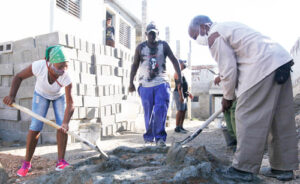
“These experiences help revolutionaries understand that we have to make changes in how we do things,” Fernández de Cossío said. “Historically, Fidel always explained this to us. We have to get out and work more. The answer lies not in use of social media, but our physical presence,” working in communities around the country.
Over the past two months, the Cuban government has given special priority to dozens of Havana neighborhoods with some of the worst conditions. Work is underway there to repair streets, housing, local stores, doctor’s offices, parks, and other facilities. Backed by national and local government bodies, the Federation of Cuban Women, Committees for the Defense of the Revolution, the Federation of University Students, and other mass organizations are working to involve local residents, including unemployed youth, in this effort.
Fernández de Cossío pointed out that conditions vary from one neighborhood to another. “So the approach used in La Güinera may not be exactly what’s needed in the Chicharrones neighborhood of Santiago de Cuba, or the San Isidro or El Fanguito barrios of Havana.
“And we can’t forget that this is Cuba in 2021, with our shortage of resources, lack of capital, debts to pay and the ever-present U.S. blockade.”
RELATED CONTENT: Presidents of Mexico and Cuba: ‘End US Economic War on Cuba’
Cuban vaccine: at home and abroad
We asked Fernández de Cossío about how the vaccination campaign against COVID is progressing. Cuba has developed five vaccines and has already begun to use three of them, Soberana II, Soberana Plus, and Abdala.
“Thanks to President Díaz-Canel’s foresight, we began to develop a COVID vaccine very early, in March 2020, when there were still no cases reported in Cuba.
“Our vaccination process takes longer than in some countries because people receive three doses. That also means producing a larger quantity than for a vaccine requiring two doses.
“As of now, nearly 50 percent of the Cuban population is fully vaccinated. We plan to vaccinate practically the entire population by November.”
Cuba is now immunizing children two years and older, the first country to do so, Fernández de Cossío said. This is possible because — drawing on decades of work developing and producing vaccines for a range of illnesses and ages — Cuban researchers designed their COVID vaccines based on biotechnology known to be safe for children.
Cuba’s revolutionary government is also making its vaccines available beyond its borders. The process is currently underway to obtain their approval by the World Health Organization, which many governments rely on before authorizing their use.
“We want to make sure to provide all the documentation and evidence showing that the vaccines are safe and effective,” Fernández de Cossío said.
“Governments such as the U.S. have a lot of influence on international bodies like WHO. And the experts used by WHO to evaluate vaccines are often executives from big corporations like Pfizer, Merck, Johnson & Johnson, and Sanofi Pasteur. So to be sure we exceed the standards of these organizations, we are being especially rigorous in preparing the documentation.”
He said the governments of Iran, Vietnam, Mexico, and Venezuela have already accepted the Cuban vaccine. Iran is now producing Soberana II and Vietnam plans to manufacture Abdala. But many other countries don’t have such capacity, and Cuba plans to produce millions of doses for international distribution.
“Once a large enough part of the Cuban population is vaccinated, we’ll have greater ability to export the vaccine,” said Fernández de Cossío. “Cuba is committed to making it available to other nations that need it.”
Featured image: Carlos Fernández de Cossío, head of Cuban foreign ministry’s department for U.S. affairs.
You must be logged in to post a comment.